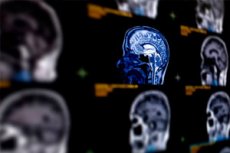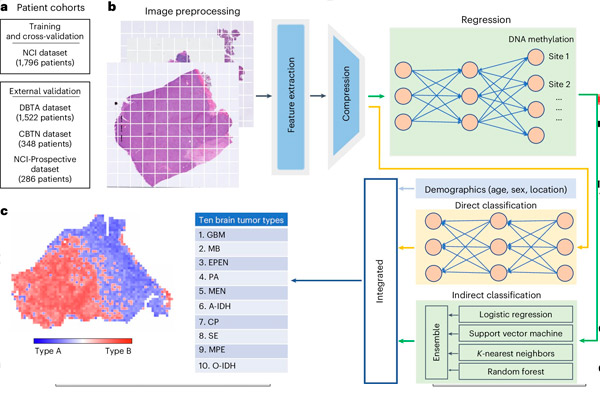Nye publikasjoner
Forskere har utviklet kunstig intelligens for å klassifisere hjernesvulster
Sist anmeldt: 02.07.2025

Alt iLive-innhold blir gjennomgått med medisin eller faktisk kontrollert for å sikre så mye faktuell nøyaktighet som mulig.
Vi har strenge retningslinjer for innkjøp og kun kobling til anerkjente medieområder, akademiske forskningsinstitusjoner og, når det er mulig, medisinsk peer-evaluerte studier. Merk at tallene i parenteser ([1], [2], etc.) er klikkbare koblinger til disse studiene.
Hvis du føler at noe av innholdet vårt er unøyaktig, utdatert eller ellers tvilsomt, velg det og trykk Ctrl + Enter.

Et nytt verktøy for kunstig intelligens for å klassifisere hjernesvulster raskere og mer nøyaktig har blitt utviklet av forskere fra Australian National University (ANU).
Ifølge dr. Dan-Thai Hoang er nøyaktighet i diagnostisering og klassifisering av svulster avgjørende for effektiv behandling av pasienter.
«Den nåværende gullstandarden for å identifisere ulike typer hjernesvulster er DNA-metyleringsbasert profilering», sa Dr. Hoang.
«DNA-metylering fungerer som en bryter for å kontrollere genaktivitet og bestemme hvilke gener som er slått på eller av.»
«Men tiden som kreves for å utføre denne typen testing kan være en betydelig ulempe, og det kan ofte ta flere uker eller mer når pasienter må ta raske avgjørelser om behandling.»

Oversikt over datasett og beregningsmessig arbeidsflyt. Kilde: Nature Medicine (2024). DOI: 10.1038/s41591-024-02995-8
«I tillegg er slike tester ikke tilgjengelige på nesten alle sykehus i verden.»
For å løse disse problemene har forskere fra ANU, i samarbeid med eksperter fra National Cancer Institute i USA, utviklet DEPLOY – en måte å forutsi DNA-metylering og deretter klassifisere hjernesvulster i 10 hovedundertyper.
DEPLOY bruker mikroskopiske bilder av en pasients vev, kalt histopatologiske bilder.
Modellen ble trent og testet på store datasett med omtrent 4000 pasienter fra USA og Europa, publisert i tidsskriftet Nature Medicine.
«Utrolig nok oppnådde DEPLOY en enestående nøyaktighet på 95 %», sa dr. Hoang.
«I tillegg, da DEPLOY analyserte et delsett av 309 spesielt vanskelige prøver å klassifisere, var de i stand til å gi en diagnose som var mer klinisk meningsfull enn den patologene opprinnelig ga.»
«Dette fremhever den potensielle rollen DEPLOY kan spille i fremtiden som et tilleggsverktøy for å utfylle patologens første diagnose eller til og med føre til en revurdering ved avvik.»
Forskerne tror DEPLOY etter hvert kan brukes til å klassifisere andre typer kreft.
Resultatene av studien ble publisert i tidsskriftet Nature Medicine.
